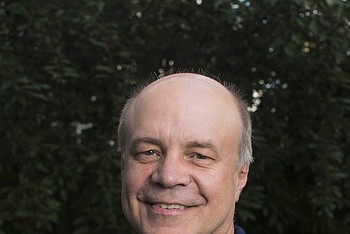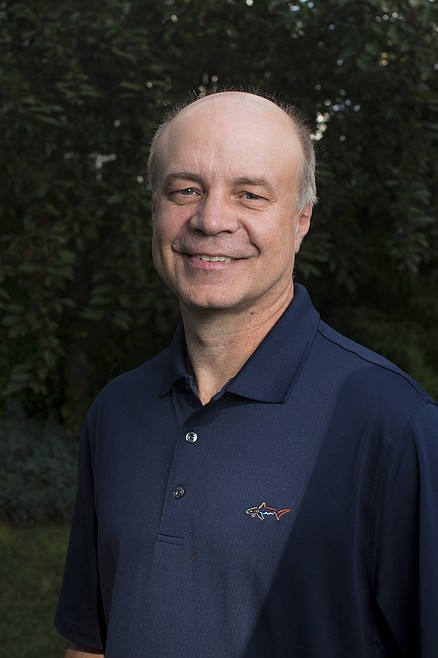Summers are getting hotter across the U.S.
RANDY MANN | Coeur d'Alene Press | UPDATED 7 months, 3 weeks AGO
The summer of 2024 is winding down across the Inland Northwest, but it was certainly another dry and hot season. July was a torrid month with the average high just slightly above 90 degrees in Coeur d’Alene, which was about 7 degrees above average. High temperatures this month, as of the weekend, were about 2 degrees higher than normal.
Our hottest weather came during the six-week cycle that began in early July and continued through the middle of August. During that stretch, there were 23 days with highs at or above 90 degrees in Coeur d’Alene. At the Spokane International Airport, it was very hot with 29 days at or above the 90-degree mark. Five days were also at or above the 100-degree mark in Coeur d’Alene with the hottest afternoon, July 21, a scorching 105 degrees. In Spokane, there were seven days with readings in the triple digits. Their highest temperature was also July 21 with a high of 107 degrees, which was 2 degrees from their highest temperature in history of 109 degrees.
It was also drier than normal across the Inland Northwest, which has been the trend over the last 20 years. In July, only 0.14 inches of rain fell in Coeur d’Alene, far below the normal of 0.92 inches. In August, the average precipitation for the month is 1.23 inches, but only 0.54 inches fell at Cliff’s station. Despite the chance of showers Tuesday, we should have another month of below-normal rainfall. At the Spokane International Airport, July’s rainfall total was a puny 0.01 inches, and just 0.24 inches in August.
Sea-surface temperatures are mostly below average across the eastern Pacific Ocean. According to NOAA, a neutral, or “La Nada,” the in-between cooler La Niña and warmer El Niño, is likely at least into September. However, a new La Niña is still forecast to form late this year and continue into early 2025. NOAA is giving odds at around 75% of the La Niña from November through January.
Assuming we get a new La Niña, the upcoming fall season is expected to turn wetter and cooler across the Inland Northwest. Except for our region, the rest of the U.S. is likely to be warmer and drier than normal for the fall of 2025. Cliff and I still believe that the chances for near to above-normal snowfalls in Coeur d’Alene and surrounding areas are better than average.
The summer of 2024 was not only one of the hottest across the Inland Northwest but most of the U.S. as well. Record-breaking temperatures led to numerous blackouts and train delays as the tracks overheated and warped, especially in the southwestern part of the country.
According to an article from CNN, the 50 largest cities in the U.S. had 1,071 days this summer with high temperatures above 95 degrees through July 31. Over the past decade, that is 161 more than average. The coastal cities of California, such as San Francisco and Los Angeles, were not as hot this summer, but the inland areas, such as Sacramento, Redding, Fresno and other areas, had long stretches of record-breaking 110-degree plus heat in July.
The city that had the most days above average for total days above 95 degrees this summer was Las Vegas with 106 days as of Aug. 24. Last month, every day was at least 105 degrees in the Nevada city with one afternoon hitting the 120-degree mark. Texas has also shown an increase in blistering summer temperatures, especially in recent years. The higher temperature, combined with high humidity levels, especially in the southern U.S., can lead to serious health problems, such as heat exhaustion and fatal heatstroke.
In Sacramento, the downtown thermometer reported 55 days with highs at or above 95 degrees. For the 2024 summer season, there were 36 days with highs in the triple digits. Most of the 100-degree temperatures occurred from June 22 through July 26 with the coolest afternoon July 16 with a high of 91 degrees. The hottest afternoon came July 6 and 11 with highs of 113 degrees. Some of the outlying areas were above 115 degrees. My 88-year-old mother who has lived in the northeastern part of the Sacramento area has said this has been the hottest summer she can remember.
The article on CNN also states that from 1974 to 1983, the extremely hot weather in most U.S. cities typically began June 22 and continued until Sept. 4. However, within the last 10 years, the average period begins a week earlier and lasts until nearly the middle of September. Some, if not a large part of the hotter summer weather, can be attributed to the expanding cities. The “urban heat island effect” of decreasing grass areas and increasing concrete jungles has certainly changed climates to the warmer side, especially in the urban regions. I’ll have more details in future columns.
• • •
Contact Randy Mann at randy@longrangeweather.com.
MORE RANDY-MANN STORIES



